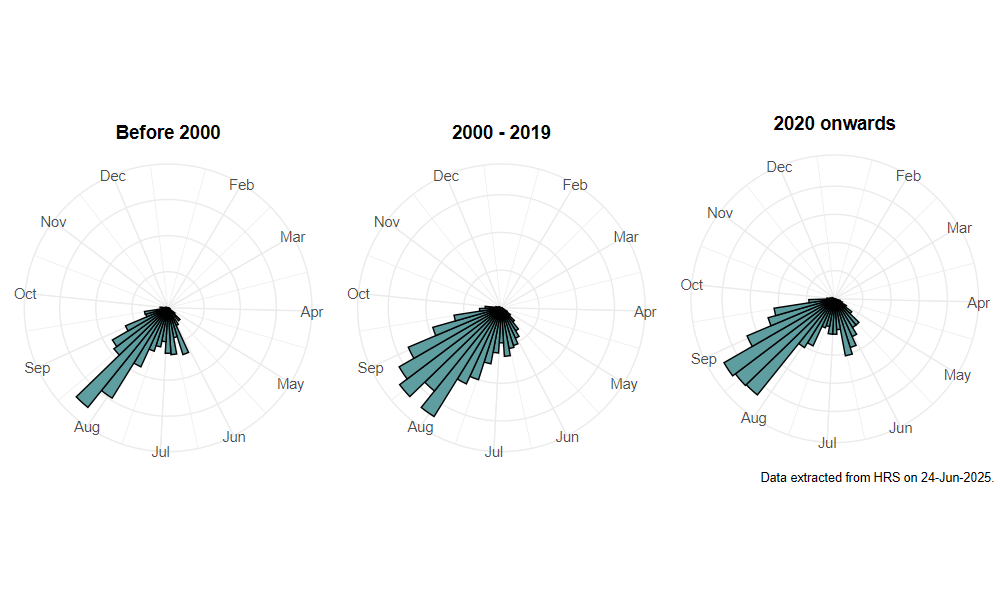Helophilus trivittatus (Fabricius, 1805)
Identification
Identification difficulty = 2. ![]()
![]() according to Ball & Morris, 20241
according to Ball & Morris, 20241
Synonymy
Helophilus parallelus (Harris, 1776) in Kloet & Hincks (1976)2.
Biology
Larva not described, but has been reared in captivity from eggs laid on an infusion of hay in water and from larvae found in semi-liquid mud mixed with animal dung. Speight (2017)3 describes it as a species of open wetlands including river-margins, seasonally flooded grassland and saltmarsh. Adults are found visiting a wide range of flowers, not infrequently well away from sites suitable for breeding and very often on dry grassland sites.
Flight period
The following plots show the number of unique records per week excluding those reported to be of immature stages.

Distribution
This is a very widespread but usually infrequent species, found only as single specimens. There is no obvious association with any particular habitat, but many records are coastal and there is a possible link to river valleys as illustrated by the concentration of records within the Severn valley. It is regarded as a migrant in continental Europe and the pattern of distribution in GB suggests that some records are likely to represent immigrants. Records have become more frequent since 2000.

Trends
The following plots show the Frescalo TFactor vs year and a map of the rescaled frequency (all records) for the species.
-
Ball, S., & Morris, R. (2024). Hoverflies of Britain and Ireland. WILDGuides (3rd ed.). Oxford: Princeton University Press. ↩
-
Kloet, G., & Hinks, W. (1976). A check list of British insects. 2nd Ed. Part 5: Diptera and Siphonaptera. Handbooks for the Identification of British Insects, 11, 1–139. ↩
-
Speight, M. (2017). Species accounts of European Syrphidae ( No. 97). yrph the Net, the database of European Syrphidae (Diptera) (p. 294). Dublin: Syrph the Net publications. Retrieved from https://pollinators.ie/wordpress/wp-content/uploads/2018/05/StN-2017-Species-Accounts.pdf ↩